maintenance of mud pump supplier

Many things go into getting the most life out of your mud pump and its components — all important to extend the usage of this vital piece of equipment on an HDD jobsite. Some of the most important key points are covered below.
The most important thing you can do is service your pump, per the manufacturer’s requirements. We get plenty of pumps in the shop for service work that look like they have been abused for years without having basic maintenance, such as regular oil changes. You wouldn’t dream of treating your personal vehicle like that, so why would you treat your pump like that.
Check the oil daily and change the oil regularly. If you find water or drilling mud contamination in the oil, change the oil as soon as possible. Failure to do so will most likely leave you a substantial bill to rebuild the gear end, which could have been avoided if proper maintenance procedures would have been followed. Water in the oil does not allow the oil to perform correctly, which will burn up your gear end. Drilling mud in your gear end will act as a lapping compound and will wear out all of the bearing surfaces in your pump. Either way it will be costly. The main reasons for having water or drilling mud in the gear end of your pump is because your pony rod packing is failing and/or you have let your liners and pistons get severely worn. Indication of this is fluid that should be contained inside the fluid end of your pump is now moving past your piston and spraying into the cradle of the pump, which forces its way past the pony rod packing. Pony rod packing is meant to keep the oil in the gear end and the liner wash fluid out of the gear end. Even with brand new packing, you can have water or drilling fluid enter the gear end if it is sprayed with sufficient force, because a piston or liner is worn out.
There is also usually a valve on the inlet of the spray bar. This valve should be closed enough so that liner wash fluid does not spray all over the top of the pump and other components.
Liner wash fluid can be comprised of different fluids, but we recommend just using clean water. In extremely cold conditions, you can use RV antifreeze. The liner wash or rod wash system is usually a closed loop type of system, consisting of a tank, a small pump and a spray bar. The pump will move fluid from the tank through the spray bar, and onto the inside of the liner to cool the liner, preventing scorching. The fluid will then collect in the bottom of the cradle of the pump and drain back down into the collection tank below the cradle and repeat the cycle. It is important to have clean fluid no matter what fluid you use. If your liners are leaking and the tank is full of drilling fluid, you will not cool the liners properly — which will just make the situation worse. There is also usually a valve on the inlet of the spray bar. This valve should be closed enough so that liner wash fluid does not spray all over the top of the pump and other components. Ensure that the water is spraying inside the liner and that any overspray is not traveling out of the pump onto the ground or onto the pony rod packing where it could be pulled into the gear end. If the fluid is spraying out of the cradle area and falling onto the ground, it won’t be long before your liner wash tank is empty. It only takes a minute without the cooling fluid being sprayed before the liners become scorched. You will then need to replace the pistons and liners, which is an avoidable costly repair. Make a point to check the liner wash fluid level several times a day.
Liner wash fluid can be comprised of different fluids, but it is recommended to just using clean water. In extremely cold conditions, you can use RV antifreeze.
Drilling fluid — whether pumping drilling mud, straight water or some combination of fluid — needs to be clean. Clean meaning free of solids. If you are recycling your fluid, make sure you are using a quality mud recycling system and check the solids content often throughout the day to make sure the system is doing its job. A quality mud system being run correctly should be able to keep your solids content down to one quarter of 1 percent or lower. When filling your mud recycling system, be sure to screen the fluid coming into the tanks. If it is a mud recycling system, simply make sure the fluid is going over the scalping shaker with screens in the shaker. If using some other type of tank, use an inline filter or some other method of filtering. Pumping out of creeks, rivers, lakes and ponds can introduce plenty of solids into your tanks if you are not filtering this fluid. When obtaining water out of a fire hydrant, there can be a lot of sand in the line, so don’t assume it’s clean and ensure it’s filtered before use.
Cavitation is a whole other detailed discussion, but all triplex pumps have a minimum amount of suction pressure that is required to run properly. Make sure this suction pressure is maintained at all times or your pump may cavitate. If you run a pump that is cavitating, it will shorten the life of all fluid end expendables and, in severe cases, can lead to gear end and fluid end destruction. If the pump is experiencing cavitation issues, the problem must be identified and corrected immediately.
The long and the short of it is to use clean drilling fluid and you will extend the life of your pumps expendables and downhole tooling, and keep up with your maintenance on the gear end of your pump. Avoid pump cavitation at all times. Taking a few minutes a day to inspect and maintain your pump can save you downtime and costly repair bills.
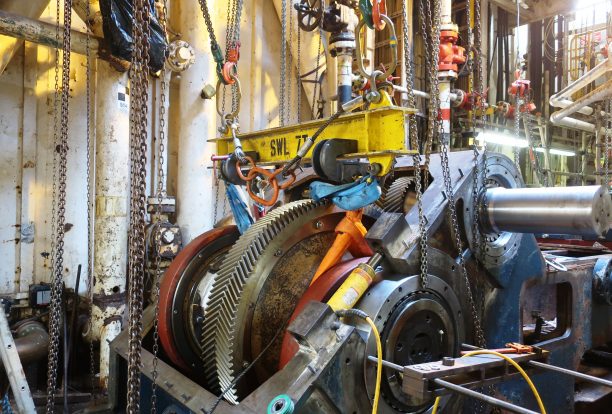
We keep your mud pumps running in first class condition – providing onsite inspections, repairs and complete overhaul as well as all associated parts.
Periodically we’ll inspect for wear, cracks and damage to critical components such as bearings, bull gear and pinion, conrods and crossheads. We’ll check the condition of your seals and other rubber goods and look for oil contamination. We’ll inspect your frame and ensure your pump is set up as per the manufacturer’s recommended tolerances, providing feedback and detailed reporting.
Where overhaul is required we’ll take care of complete disassembly, cleaning and NDT. Repairs will be made to machined components as necessary. Bearings, seals and other components will be replaced in line with our inspections. Motors will be overhauled, lube systems serviced and pulsation dampeners recertified. We’ll also check your fluid ends are in spec and can repair or replace. Your pump is then fully reassembled and commissioned.
We can do all of this on site or you can ship your crankshaft to a RigQuip location for workshop overhaul. Either way, we’ll work closely with your rig crew and provide first class start up support.

The mud pump mainly transports drilling fluid with high sand content, large specific gravity and high viscosity to the bottom of the well at high pressure during the drilling process.
When working, it is used to cool the drill bit, drive the drilling rig, clean the drilling tool, scour the bottom of the well, fix the well wall, break the rock, and take out the cuttings when returning from the bottom of the well, reduce the friction between the hole wall and the drilling tool, and protect the hole wall from collapsing.
Usually the mud pump can be divided into two parts - the power end and the hydraulic end, and its working process can be divided into two steps of suction and discharge.
The power end of the mud pump is composed of connecting rod, eccentric wheel, cross head, crank, etc., which are used to transmit power, convert movement speed and movement mode, so as to provide suitable power for the hydraulic end.
The hydraulic end is composed of a piston, a pump cylinder, a suction pipe, a suction valve, a discharge pipe, a discharge valve, etc. It can convert the mechanical energy into the internal energy of the liquid, which is used for the transportation of mud.
Under the alternating process of suction and discharge, the purpose of circulating and pressurizing the flushing fluid can be achieved. The medium conveyed by the mud pump usually has high viscosity, high sand content, high pressure and certain corrosiveness. Reasonable daily maintenance and maintenance can prolong the service life of the pump.
The mud pump must be installed on a relatively stable foundation. Before the mud pump is turned on, the lubrication condition, tightening state, fitting clearance, etc. of the various components in the pump should be carefully checked.
The frequent pumping of the mud pump should be avoided as much as possible. When the pump is turned on or reversed, the vaporization of the conveying medium in the pump should be prevented, and the temperature of the medium in the pump should not change greatly during the conveying process. It is due to the uneven heating of the pump body caused by the temperature change, which may lead to deformation and aging of the components in the mud pump.
When the mud pump is transporting medium with higher temperature, the pump should be fully warmed before starting, and the pump can be started when the temperature of the pump body is consistent with the temperature of the medium being transported.
The particle size of the sand transported by the mud pump during the construction process is related to the service life of the vulnerable parts of the mud pump. Air leakage is not allowed in the suction pipeline of the mud pump. The size of the particles passing through the pump should meet the requirements to avoid large particles so as to avoid clogging the mud pump with large particles.
The bearing, pump casing and impeller of the mud pump are the most vulnerable parts. The bearing of the mud pump is bent or has a coaxial deviation with the bearing seat, which will increase the wear of the pump parts and cause the vibration of the pump body.
Most of the damage to the blades of the mud pump is caused by the cavitation of the pump or the inhalation of solid and metal impurities. It is necessary to check and replace the vulnerable parts frequently, or try to use more advanced anti-wear technical measures to increase the service life of wearing parts.
The daily maintenance and maintenance of the china hydraulic mud pump should be carried out by special personnel, and the commonly used and easily damaged mud pump accessories should be equipped for emergency use.
Regularly check and maintain the various parts of the mud pump, solve problems in time, and try to avoid problems and losses during the operation of the mud pump.
How to maintain the mud pump well, it is necessary to ensure that the oil quantity and quality of the lubricating oil are clean, part of the oil bottom needs to be released every month and part of the new oil needs to be replenished, and the oil can be changed every six months.
The bearing assembly is clean and dust-free. Check the temperature change of each part of the bearing to see if there is any abnormal noise. If the temperature is too high, the bearing will be burnt. Always check the working conditions of the mud pump piston and cylinder liner so that the piston can be replaced in time.
Check the use of the valve cover and cylinder head sealing ring, check the wear and erosion of the valve seat, valve body, and valve rubber, and replace it in time. normal.
Check the piston and safety pin of the safety valve, and replace the safety pin of the safety valve installed on the driving shaft in time to ensure that the mud pump can operate safely under drilling conditions.
The mud pump needs a comprehensive disassembly inspection every two years to detect the clearance of the bearing, maintenance and repair or direct replacement, and regular disc pumping of the mud pump in order to prolong the service life of the mud pump.

Prior check to the start of a mud pump for clear water inlet and outlet pipes, buttered front and rear bearings and a filled packing. The China mud pump should be equipped with a high-pressure water pump, which pumps water to the sealing fill with a pressure greater than that of the mud pump. As a protection to the fill, never turn off the water pump while the mud pump is in its working state. Otherwise, the sealing part is of immediate wear.
The service life of the mud pump depends on the clearance between the impeller and the guard plate. An unreasonable clearance is responsible for the vibration and the noise of the pump and the damage of overflowing parts. Therefore, when it comes to the impeller replacement, the clearance shall meet the requirements of the design drawing by adjusting screws on the rear bearing. Take the suction capacity of mud into account for the allowable suction range of the mud pump is determined by water transported.
The Construction Department shall have some professional person responsible for the maintenance and repair of the construction machinery. Regular check and maintenance of the mud pump and other machinery, such as the drilling mud pump parts, are useful for the early detection and a prompt solution.
Pay attention to the size of sediment particles, among which the large ones are prone to wear the vulnerable parts of the China mud pumpsuch as pump shells, bearings, impellers, and so on. Timely maintain the use and replace the damaged. Take advanced anti-wear measures to lengthen the service life of vulnerable parts, which can downturn the cost and up forward the efficiency. Meanwhile, keep backup vulnerable parts in stock in case of unexpected replacement needs.
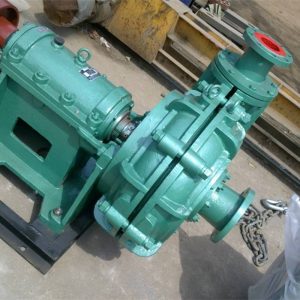
Mud pump refers to a machine that transports mud or water and other flushing fluid into the borehole during drilling. Mud pumps are an important part of drilling equipment, sometimes called sewage pumps and slurry pumps.
(1) Before operating the mud pump, it should be installed on a fixed foundation frame or foundation, and there must be no looseness; after installation, it must be carefully checked whether the joints are tight, the direction of electric rotation is correct, and the clutch is flexible. Reliable, the pipe connection is tight and reliable, the bottom valve is flexible and effective.
(2) In order to ensure the normal operation of the mud pump, the pump should be rotated by hand to make the piston try to make two reciprocating motions. It is determined that there is no obstruction in the machine and the line insulation is good, and the no-load movement can be performed. After the pump body starts to move, can not immediately increase the load, and then gradually increase after the mud pump is running normally.
(3) When the mud pump starts to operate, always pay attention to the sealing condition of each sealing device. If there is a bad seal, it should be adjusted in time. In order to ensure the normal use of the tie rod and the auxiliary rod, it is necessary to apply lubricating oil frequently; It is also necessary to frequently check the sediment content in the mud, and the sand content requirement cannot exceed 10%.
(4) If the mud pump needs to change speed during the operation, it should stop the pump and then shift the gear before starting the operation. It should not be directly changed during the running process. The mud pump with several speeds should be reliable in splash lubrication. During the operation, several speeds will be operated separately, and the time will be no less than 30 seconds.
(5) If the mud pump is abnormal during operation or if the water weight, the pressure is abnormal or the temperature is abnormally high, the pump should be stopped. In normal operation, if there is the no-load condition, stop the pump in time, if the pump is stopped for a long time. It is necessary to open all the water discharge holes, loosen the cylinder head, lift the bottom valve water release rod, and completely drain the mud and sand in the pump body and the pipeline. If it is not used for a long time, it is necessary to thoroughly clean the mud sand of each part. Grease, the lubricant in the crankcase is exhausted, in order to prevent rust, but also take anti-rust and anti-corrosion measures.
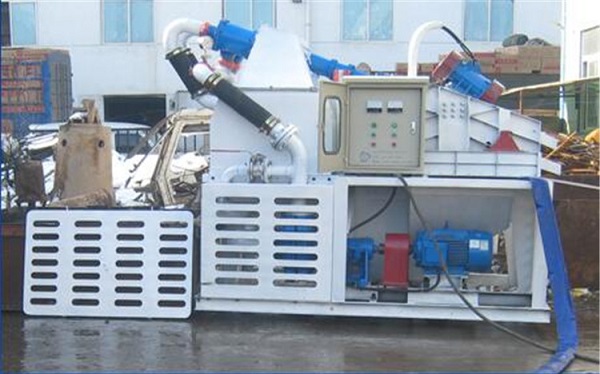
A comprehensive range of mud pumping, mixing, and processing equipment is designed to streamline many essential but time-consuming operational and maintenance procedures, improve operator safety and productivity, and reduce costly system downtime.
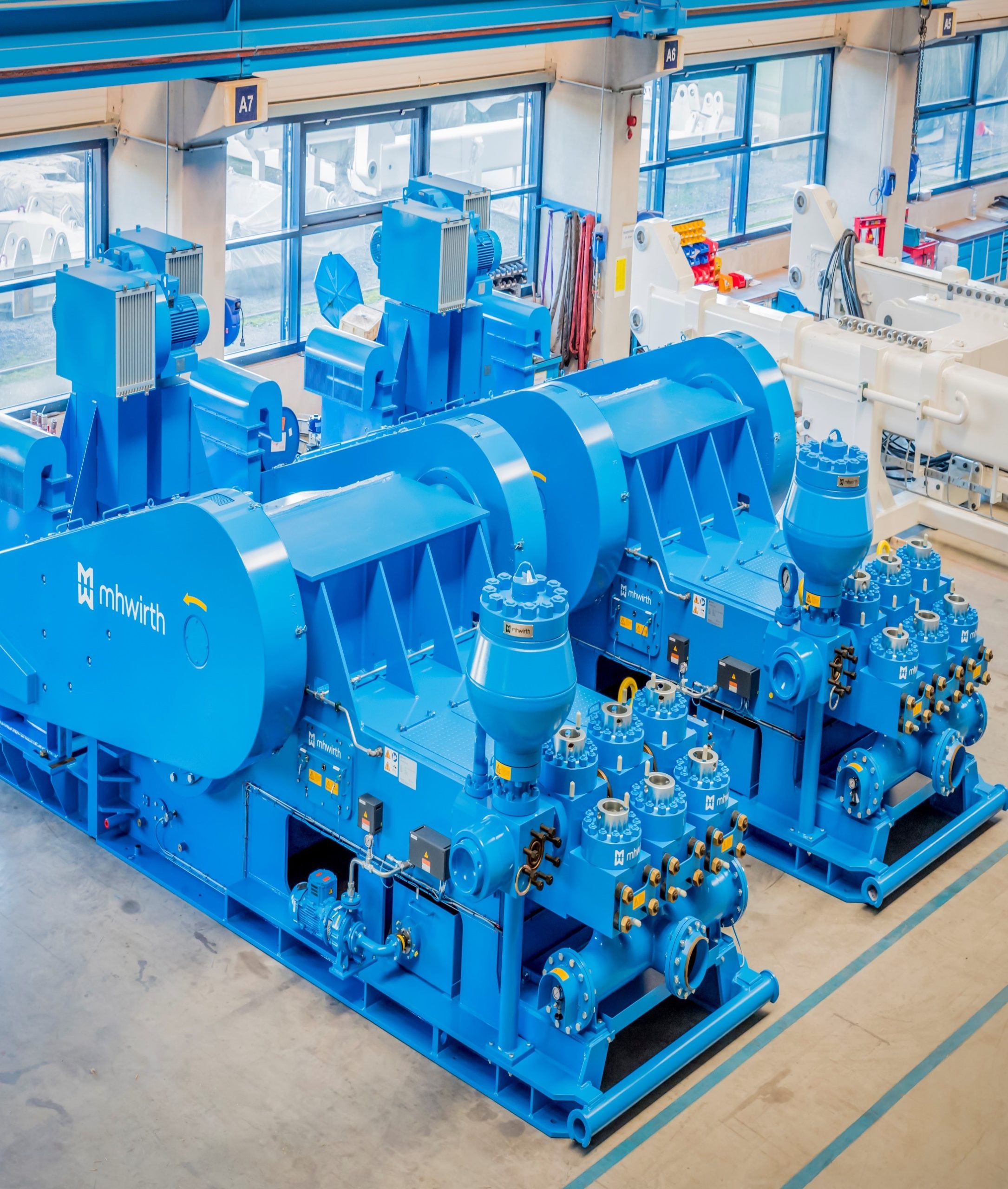
Cavitation is an undesirable condition that reduces pump efficiency and leads to excessive wear and damage to pump components. Factors that can contribute to cavitation, such as fluid velocity and pressure, can sometimes be attributed to an inadequate mud system design and/or the diminishing performance of the mud pump’s feed system.
Although cavitation is avoidable, without proper inspection of the feed system, it can accelerate the wear of fluid end parts. Over time, cavitation can also lead to expensive maintenance issues and a potentially catastrophic failure.
When a mud pump has entered full cavitation, rig crews and field service technicians will see the equipment shaking and hear the pump “knocking,” which typically sounds like marbles and stones being thrown around inside the equipment. However, the process of cavitation starts long before audible signs reveal themselves – hence the name “the silent killer.”
Mild cavitation begins to occur when the mud pump is starved for fluid. While the pump itself may not be making noise, damage is still being done to the internal components of the fluid end. In the early stages, cavitation can damage a pump’s module, piston and valve assembly.
The imperceptible but intense shock waves generated by cavitation travel directly from the fluid end to the pump’s power end, causing premature vibrational damage to the crosshead slides. The vibrations are then passed onto the shaft, bull gear and into the main bearings.
If not corrected, the vibrations caused by cavitation will work their way directly to critical power end components, which will result in the premature failure of the mud pump. A busted mud pump means expensive downtime and repair costs.
Washouts are one of the leading causes of module failure and take place when the high-pressure fluid cuts through the module’s surface and damages a sealing surface. These unexpected failures are expensive and can lead to a minimum of eight hours of rig downtime for module replacement.
To stop cavitation before it starts, install and tune high-speed pressure sensors on the mud suction line set to sound an alarm if the pressure falls below 30 psi.
Although the pump may not be knocking loudly when cavitation first presents, regular inspections by a properly trained field technician may be able to detect moderate vibrations and slight knocking sounds.
Gardner Denver offers Pump University, a mobile classroom that travels to facilities and/or drilling rigs and trains rig crews on best practices for pumping equipment maintenance.
Program participants have found that, by improving their maintenance skills, they have extended the life of fluid end expendables on their sites. They have also reported decreases in both production and repair costs, as well as reductions in workplace hazards.
Severe cavitation will drastically decrease module life and will eventually lead to catastrophic pump failure. Along with downtime and repair costs, the failure of the drilling pump can also cause damage to the suction and discharge piping.
When a mud pump has entered full cavitation, rig crews and field service technicians will see the equipment shaking and hear the pump ‘knocking’… However, the process of cavitation starts long before audible signs reveal themselves – hence the name ‘the silent killer.’In 2017, a leading North American drilling contractor was encountering chronic mud system issues on multiple rigs. The contractor engaged in more than 25 premature module washes in one year and suffered a major power-end failure.
Gardner Denver’s engineering team spent time on the contractor’s rigs, observing the pumps during operation and surveying the mud system’s design and configuration.
The engineering team discovered that the suction systems were undersized, feed lines were too small and there was no dampening on the suction side of the pump.
There were also issues with feed line maintenance – lines weren’t cleaned out on a regular basis, resulting in solids from the fluid forming a thick cake on the bottom of the pipe, which further reduced its diameter.
Following the implementation of these recommendations, the contractor saw significant performance improvements from the drilling pumps. Consumables life was extended significantly, and module washes were reduced by nearly 85%.
Although pump age does not affect its susceptibility to cavitation, the age of the rig can. An older rig’s mud systems may not be equipped for the way pumps are run today – at maximum horsepower.

Distributor of engineered fluid handling pumps, packaged pumping systems, repairs, parts, & integrated pump control systems. Mud pumps, chiller/condenser pumps, plumbing pumps, boiler feed systems, in-line circulators, condensate systems, sump & sewage pumps, end suction pumps, submersible sump & sewage, non-clogs & grinders, self primers, packaged lift stations, variable speed pump systems, metering pumps, chemical injection systems, chemical mixing systems, peristaltic pumps for chemical feed, high viscous & shear sensitive fluids, self primers, stainless steel, trash pumps, hot oil pumps, vertical turbine pumps, sanitary pumps, marine pumps, industrial pumps, ANSI end suction, vertical cantilever, double suction, non-clogs, progressive cavity pumps, helical gear pumps, well pumps, lab pumps, hose pumps, control valves, check valves, air release valves, tanks, pressure vessels.

We know that cost savings on identical spare parts is important for offshore rig Companies today. Therefore we provide our services and spare parts at considerable cost reductions compared to sourcing from the major OEMs. Tratec can guarantee identical parts with all required part certificates. We maintaing the highest quality, using state-of-the art service facilities and experienced, specialist mud pump engineers for service work.
Tratec has supplied more than 20 mud pump spare part, overhaul and recertification projects the last 5 years. References include rig companies Odfjell Drilling, Maersk Drilling, Archer, Saipem, KCA Deutag, and others.
Tratec is an experienced specialist supplier of overhaul, SPS, parts and service for rig and drilling equipment. We can provide Norwegian quality and decades of experience, while maintaning sensible prices and flexible solutions.
Tratec can supply overhaul and parts compatible with the following Mud Pump makers and trademarks: National Oilwell Varco (NOV), MHWirth, Continental Emsco, Gardner Denver, Lewco, Drillmec, and others. Tratec is an independent supplier of drilling equipment parts. Tratec is neither a licensee, nor is affiliated with any of the named original equipment manufacturers (OEM). The manufacturer’s names, equipment names, or trademarks used herein are solely for identification purposes, and are not intended by Tratec to cause confusion as to the source, sponsorship, or quality of the parts supplied by Tratec. The original equipment manufacturers named above and throughout this website do not sponsor, promote, warranty or endorse Tratec’s supply of parts.
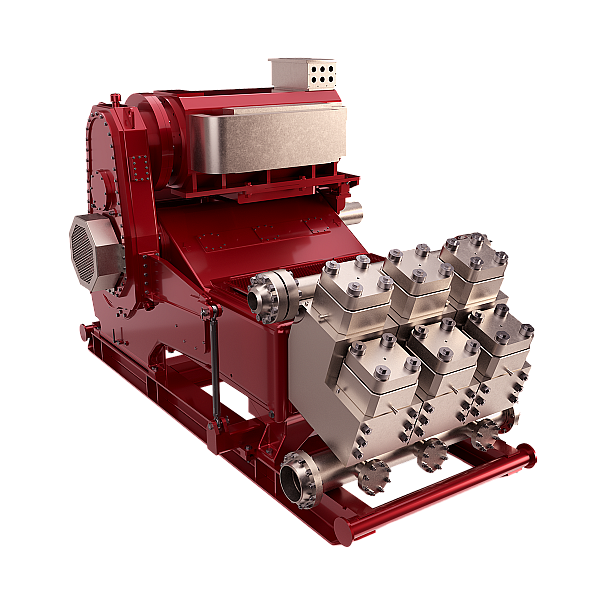
For the successful execution of your projects, it is important to find an appropriate company with a good track record. We help you in connecting with the top mud pump manufacturers and companies and get the best quotation.
We have designed affordable annual subscription plans which would help you get leads for your business. You can have a look at our pricing chart by clicking on this link: https://www.energydais.com/pricing/ . These plans are customized according to the specific needs and requirements of your business.
The most widely used mud pumps across the industry are Triplex Reciprocating Pumps. Their application has gained immense popularity with time because they are 30% lighter than duplex reciprocating pumps with relatively less operational cost. Moreover, through these pumps the discharge of mud is smooth and they are capable of moving large volume of mud at higher pressure.
Yes. We help you find the best mud pumps irrespective of your location. We simplify your search by connecting you with top mud pump manufacturers and mud pump companies in your location, according to your budget and business requirement.
Yes. We use third-party companies to provide best quotations for your shipment and inspection of manufactured goods. We make sure that you get quality products from the manufacturer at the best price.
The most widely used mud pumps across the industry are Triplex Reciprocating Pumps. Their application has gained immense popularity with time because they are 30% lighter than duplex reciprocating pumps with relatively less operational cost. Moreover, through these pumps the discharge of mud is smooth and they are capable of moving large volume of mud at higher pressure.
The different parts of a mud pump are Housing itself, Liner with packing, Cover plus packing, Piston and piston rod, Suction valve and discharge valve with their seats, Stuffing box (only in double-acting pumps), Gland (only in double-acting pumps), and Pulsation dampener. A mud pump also includes mud pump liner, mud pump piston, modules, hydraulic seat pullers along with other parts.
The wearing parts of a mud pump should be checked frequently for repairing needs or replacement. The wearing parts include pump casing, bearings, impeller, piston, liner, etc. Advanced anti-wear measures should be taken up to enhance the service life of the wearing parts. This can effectively bring down the project costs and improve production efficiency.
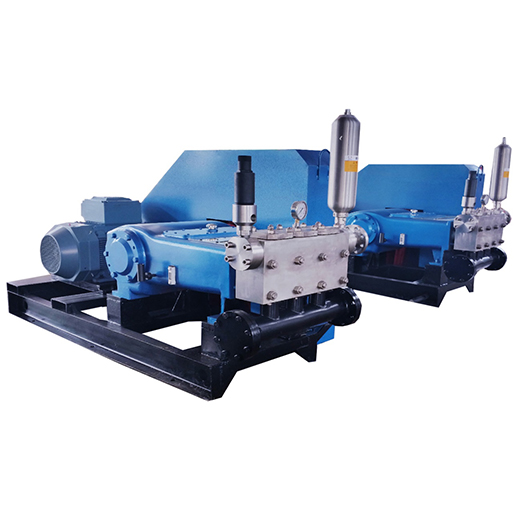
I’ve run into several instances of insufficient suction stabilization on rigs where a “standpipe” is installed off the suction manifold. The thought behind this design was to create a gas-over-fluid column for the reciprocating pump and eliminate cavitation.
When the standpipe is installed on the suction manifold’s deadhead side, there’s little opportunity to get fluid into all the cylinders to prevent cavitation. Also, the reciprocating pump and charge pump are not isolated.
The gas over fluid internal systems has limitations too. The standpipe loses compression due to gas being consumed by the drilling fluid. In the absence of gas, the standpipe becomes virtually defunct because gravity (14.7 psi) is the only force driving the cylinders’ fluid. Also, gas is rarely replenished or charged in the standpipe.
Installing a suction stabilizer from the suction manifold port supports the manifold’s capacity to pull adequate fluid and eliminates the chance of manifold fluid deficiency, which ultimately prevents cavitation.
Another benefit of installing a suction stabilizer is eliminating the negative energies in fluids caused by the water hammer effect from valves quickly closing and opening.
The suction stabilizer’s compressible feature is designed to absorb the negative energies and promote smooth fluid flow. As a result, pump isolation is achieved between the charge pump and the reciprocating pump.
The isolation eliminates pump chatter, and because the reciprocating pump’s negative energies never reach the charge pump, the pump’s expendable life is extended.
Investing in suction stabilizers will ensure your pumps operate consistently and efficiently. They can also prevent most challenges related to pressure surges or pulsations in the most difficult piping environments.

If the slurry pump is driven by a belt, please check the tension of the rope at least once a quarter. Too tight belts will cause damage to the motor bearing and once the bearing is broken the bearings will start to fail inside the pump. Belt that is operated when it is too loose will cause poor performance and cause slip damage to the belt.
If your dredge pump is using lubricant for cooling, please check it periodically to make sure there is no water or other impurities in the oil. If the pump seal remains stable, changing the oil periodically will increase the life of any pump.
Best performance is achieved by occasionally checking the out-of-wing clearance. Refer to instructions to check gaps appropriately. When checking the clearance, it is also necessary to check the impeller wear and other parts of the dredge pump.
For this problem, the best solution is to install pressure gauges and flowmeters on the discharge lines of the pumps. You can take the display pressure and multiply it by 2.31 to get the relative TDH (total dynamic head). You can then take that TDH along with the measured flow and see if your pump runs near the BEP (best efficiency point) on the pump’s baseline. If not, please contact your provider.
Temperature sensors are provided with our submersible pumps for engine protection. Each guide provided with the pump will outline how to connect and monitor the temperature sensors for the maximum life cycle.
If the engine is overheated, the sensors will automatically shut off and the pump will stop working until the engine cools down. If there is no sensor, or the sensor is not connected to the pump, there is a risk of engine fire.
Horizontal and vertical pump cantilever need to check the temperature of the bearing weekly while the pump is in operation. Use a temperature gun to check the bearing housing temperature closest to the bearing.
While most pump bearings run in the range of 140 to 170 degrees Fahrenheit, it is recommended that users never allow temperatures in excess of 200 degrees Fahrenheit (about 94 degrees Celsius). High bearing temperatures may be a sign of excessive lubrication or a problem with the bearing.
Proper vibration monitoring will provide the operating team with useful information that can increase MTBF (mean time between failures) and improve pump performance. Refer to the Hydraulic Institute’s vibration monitoring guide (American Hydraulic Institute) for vertical, horizontal and submersible pumps for appropriate limits.
Currently Thai Khuong Pump is representing the pump brand Schuro Slurry in Vietnam specializes in providing products with large capacity US brand mud pump (you can refer to the productshere).
If you have not yet selected a suitable mud pump product, or have any questions need advice or provide technical information, product prices. Let’s contact right with us.

Mud pumps are the heart of a drilling operation. TSM designs and manufactures extremely reliable and easy-to-maintain mud pumps, eliminating unnecessary maintenance and downtime.

Our manufacturer Mud Pump skid is suitable for operations in rough, windy, damp and dusty oilfield conditions. Dependent upon customer horsepower requirements the engine sizes will vary.
All equipment is rated for operating at ambient temperatures up to +120 Deg F at 1200 ft altitude. The unit is built on heavy duty oilfield skid with lift frame. The control system is mounted in a stainless steel box on the side of the unit. The digital display provides all important engine and transmission data. Unit is also equipped with emergency kill function.
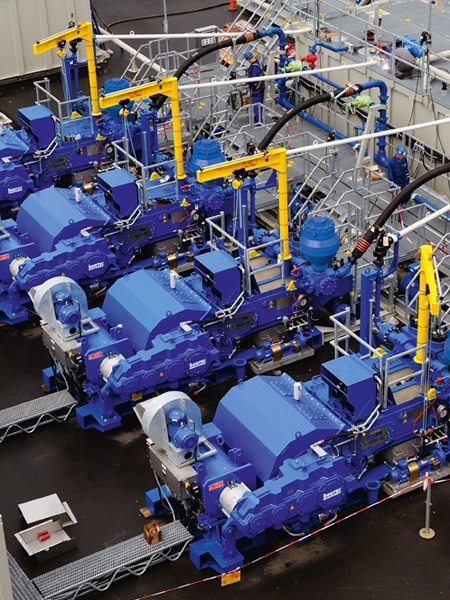
Manufacturer of a wide range of products which include Sewage & Mud Pump Repairing Service, Mud Pumps Services Center, Rental pump services sewage Dewatering pumps and Mud Pump Repairing Services.
everaging on our years of experience, we are providing best in class Sewage & Mud Pump Repairing Serviceto our reputed clients. We take in the service for boring at several regions like in farms lands, gardens, lawns and parks. This service is the sole resolution for meeting varying water supply necessities. Our offered services are precisely rendered by our adroit...
We are ranked amongst the renowned organizations that are engaged to render the best quality Pump Repairing Service. The repairing work of pumps is executed by our highly qualified professionals using premium grade tools and the lates
ur company is one of the most preferred service provider of the most qualitative and reliable services for Vicker Hydraulic Pump Repairing, which is rendered by technical professionals and mechanical engineers who are not only well qualified but who also have a very rich experience in the domain of Pump Repairing. Moreover, we also conduct these Repair




 8613371530291
8613371530291